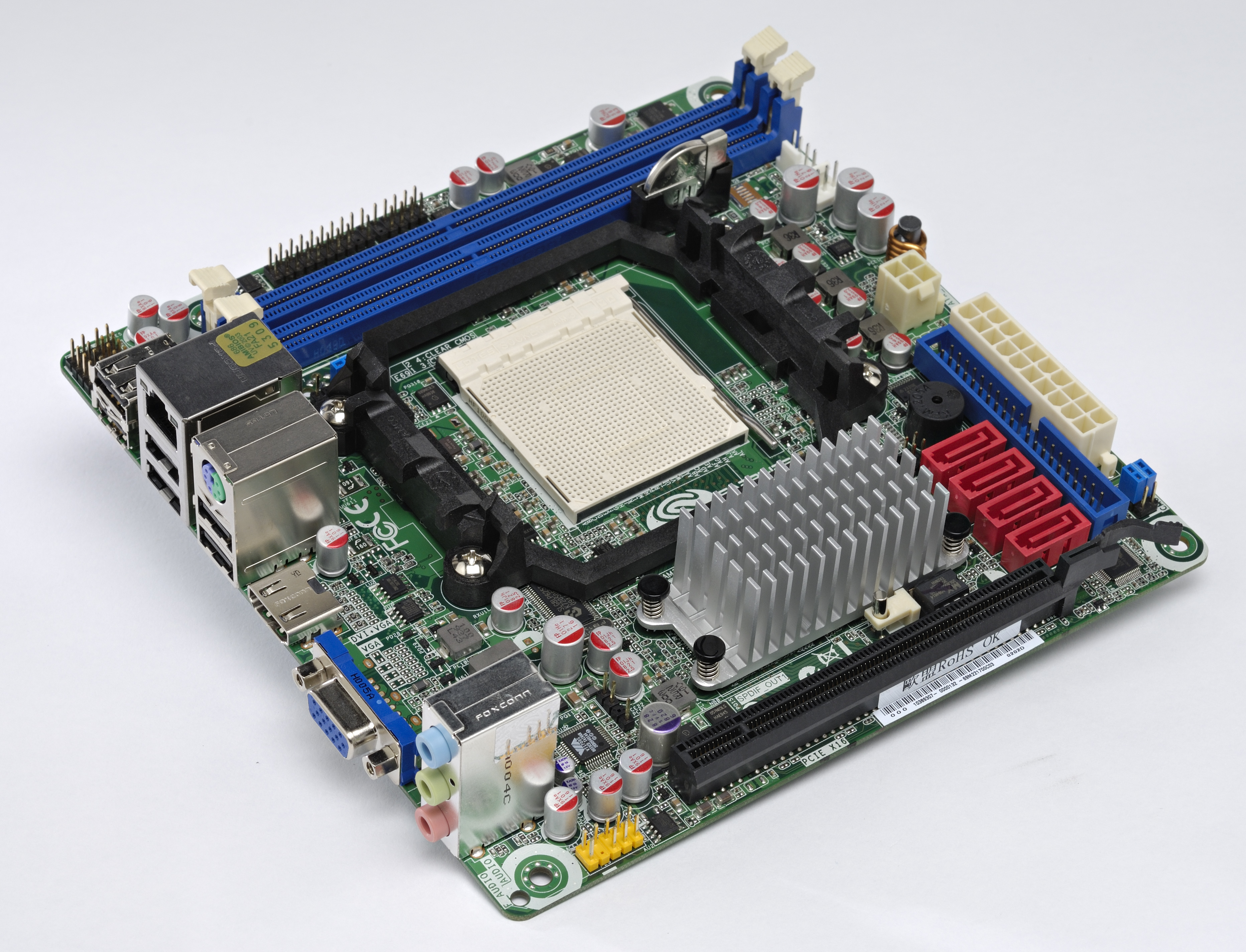Why you can trust TechRadar
You can't really complain that the layout of the motherboard is cramped, given that so much is packed onto the surface of the Pure Mini. It is worth pointing out that you're likely to want any system based on it to be as audibly unobintrusive as it is physically.
That's going to mean using a decently large heatsink for your CPU, which could be a problem.
The bigger issue, however, is that although the Pure Mini has an AM3 socket, it doesn't support any AMD processor with a TDP higher than 65W.
There's no way of getting enough power to the board to run a three or four core CPU, as it only accepts a 20-pin PSU connector rather than the more common 24-pin plug. Similarly, the auxiliary CPU power is through a four pin adaptor, not the eight pin one required for a decently powered Phenom II.
That's not a problem if you're planning on building a low-power, small footprint desktop machine for office use or day-today tasks.
Stick in a decent graphics card and you'll even have a respectable gaming rig to be proud of.
What it does mean, however, is that as a media centre there's little reason to choose the Pure ITX over, say, a dual core Atom board like the Asus AT3N7A-I which comes with NVIDIA's ION graphics with a lower overall cost.
Sign up for breaking news, reviews, opinion, top tech deals, and more.
Both will serve your purpose for watching videos or listening to music, but neither are particularly good at encoding video.
Great if you just want to consume media, but forget about DVD ripping or editing movies unless you have a lot of patience.
For a small but serious all-rounder you're best off either moving up to a larger micro-ATX size or looking at Zotac's Core i5 supporting H55-ITX or the same company's Core 2 quad capable GeForce 9300-ITX-I-E instead.
We liked:
A Mini-ITX board with a 'real' processor socket, DX10.1 capable graphics, digital audio out and an HDMI connector looks a lot better on paper than, say, an ION-based Atom system if you're thinking of building a media centre.
We disliked:
Building a small form factor system is always going to involve some sort of compromise.
There are limitations, though, which aren't alluded to on the company's website or the packaging. Only low power and energy efficient CPUs meet the maximum 65W overhead.
That's fine for watching films or general desktop use, but far from the best choice if you plan on video editing with your new PC.
Final word:
Lots of cool features on a tiny PCB, but CPU restrictions hamper its potential.
Specifications:
Manufacturer: Sapphire
Socket: AMD AM3
Form factor: Mini-ITX
RAM: DDR3 up to 8GB
Graphics: AMD Radeon 4200
Audio: Realtek ALC662HD (6 channel) w/digital out
Current page: Sapphire Pure Mini 785G - Verdict
Prev Page Sapphire Pure Mini 785G - Benchmarks